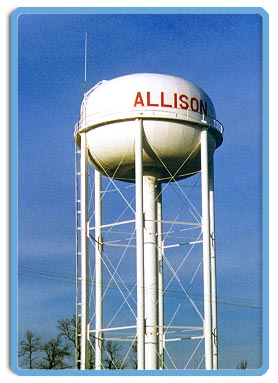
The public drinking water systems regulated by EPA, and delegated states and tribes, provide drinking water to 90 percent of Americans. These public drinking water systems, which may be publicly- or privately-owned, serve at least 25 people or 15 service connections for at least 60 days per year. Through the Public Water System Supervision (PWSS) program, EPA implements and enforces drinking water standards to protect public health. Below we have listed some of the activities that EPA, states, and tribes undertake to regulate public water supplies.
EPA does not regulate drinking water wells that supply water to fewer than 25 people.
Water Infrastructure Security
For information on current water security activities, visit the Water Security web site.
Information about Public Drinking Water Systems
for information about a particular drinking water system in your state,
go to the Local Drinking Water Page.
Drinking Water State Revolving Fund
EPA awards grants to states to establish revolving loan
funds to assist public water systems wtih infrastructure improvements. The program also allows states to reserve a portion of their grant to fund
activities needed for source water protection and enhanced water systems
management.
Drinking Water Academy
EPA offers classroom and Web-based training to improve implementation
of the Safe Drinking Water Act.
Rule Implementation
After working
with states and water suppliers to develop new drinking water rules, EPA
provides guidance documents to help them implement the rules.
Operator Certification
States must implement programs to certify operators of drinking water
systems. EPA has published guidance outlining minimum requirements.
Small Systems and Capacity
Development
The program addresses issues affecting drinking
water systems serving populations less than 3,300. A major focus
is on capacity development, which refers to the technical, financial and
managerial capacity of a system to provide safe drinking water. The program also provides information about treatment technology options
for small systems.
Laboratories and Monitoring
Water systems must monitor their drinking water to ensure that it is safe
for their customers. Monitoring schedules differ according to the type
of contaminant and the population that the public water system serves.
EPA approves the analytical methods that laboratories use to analyze drinking
water samples and also certifies the laboratories.
Water Conservation
For information on guidelines for states on water
conservation programs and guidance for water systems on how to prepare
water conservation plans, as well as fact sheets for the public.
Research
The Office of Research & Development's Water
Supply and Water Resources Division conducts research to help prepare
drinking water regulations and to develop technologies and strategies
for controlling waterborne contaminants.
Tools
Public Water System Supervision (PWSS) Program
Issues
Enforcement
EPA's Office of Enforcement
and Compliance Assurance (OECA) works on enforcement
activities related to drinking water.
Variances and Exemptions
States
or EPA may grant variances to allow public water systems to use less costly
technology. Exemptions can allow public water systems more time
to comply with a new regulation.
Information from other federal agencies
|

